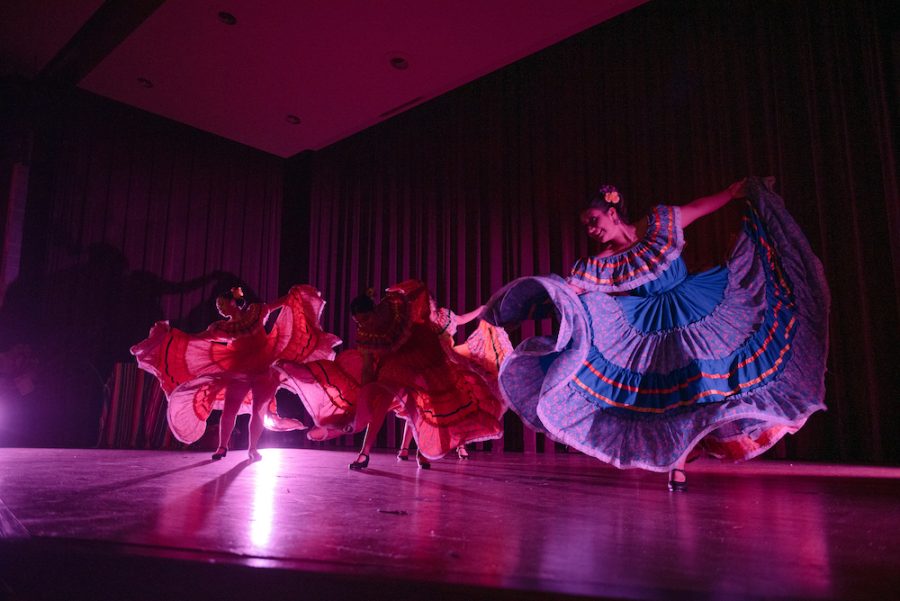Ballet Folklórico feels like home, again
May 17, 2022
From the giant jug of horchata at the theater entrance to the appreciative laughs for the emcees’ banter with the crowd, Ballet Folklórico’s seventh annual Colores De La Primavera show on May 14 felt like home to the performers and the audience alike.
Ballet Folklórico México de Northwestern: Ritmo de Mis Ancestros, continues the legacy of Mexican choreographer Amalia Hernández, according to co-lead choreographer and incoming President SESP junior Joselyn Chavez. Amalia Hernández created the original Ballet Folklórico de México, which curated regional dances based on Indigenous traditions.
“Some of these dances in the show are from Jalisco, from Sinaloa, and as well as some from Guerrero, and then we’re also doing a calabaceado from Baja California,” Chavez said.
During the show in the McCormick Auditorium, with about 100 audience members, there were almost as many flowers for seniors and in the women’s hairpieces as there are in the Shakespeare Garden. The crowd loved every ballet piece, even cheering over the music on occasion.
Each piece looked different, especially when comparing styles between Mexican states. The dancers for “El Sinaloense,” a work inspired by the state of Sinaloa, performed with greater haste than the dancers for “El Son de La Negra,” inspired by the state of Jalisco.
Mariachi NU was the guest performer and capped off its performance with a rendition of “Sabes Una Cosa.”
Between the dances, co-emcees Weinberg sophomore Kimberly Padilla and NU alumna Cristina Hernández (Weinberg ’20), presented the origin and style of the dances. They also primed the crowd in Spanish and English with appeals for “aplauso!” and shouting out Mexican states for ancestral pride.
“Because it is Ballet Folklórico, a traditional Mexican dance, many family members are only Spanish-speaking. We spoke in English and Spanish to be more inclusive.” said Cristina Hernández.
After intermission, Ballet Folklórico honored the group’s seniors. Treasurer and Weinberg senior Alexis Puente said the show was bittersweet — the seniors had to hang up their undergraduate botas vaqueras and perform one last time in front of enthusiastic friends and family.
Half of Ballet’s members are in Multicultural Greek organizations. Cristina Hernández, an alumna of Kappa Delta Chi, expressed her happiness seeing so many Multicultural Greek students in the show.
“Having cousins and sorority sisters and friends dancing so beautifully made me proud,” Cristina Hernández said. “Having the newer sorority members being choreographers makes me so proud.”
Puente, who joined Ballet Folklórico in fall 2019, said he was sad that his first show was also his last, but he still enjoyed being part of the group.
After the last piece, “El Calabaceado,” all of the dancers took a bow. The show was the first since spring 2019, and a labor of love from all performers. This effort showed in every step, skirt twirl and tipped cap.
“Ballet Folklórico is inclusive of everybody. You don’t even have to be Latino, just respectful of the Latino culture,” Chavez said. “Around campus, just come and stop by whenever you want. If you’re just interested in wanting to play with the skirt or understand what the zapateado dance is, that’s fine.”
Email: sterlingortiz2022@u.northwestern.edu
Twitter: @SOrtiz2000
Related Stories:
— The rebirth of Dale Duro Latin Dance Company
— Ballet Folklórico and Mariachi NU host their annual showcases



